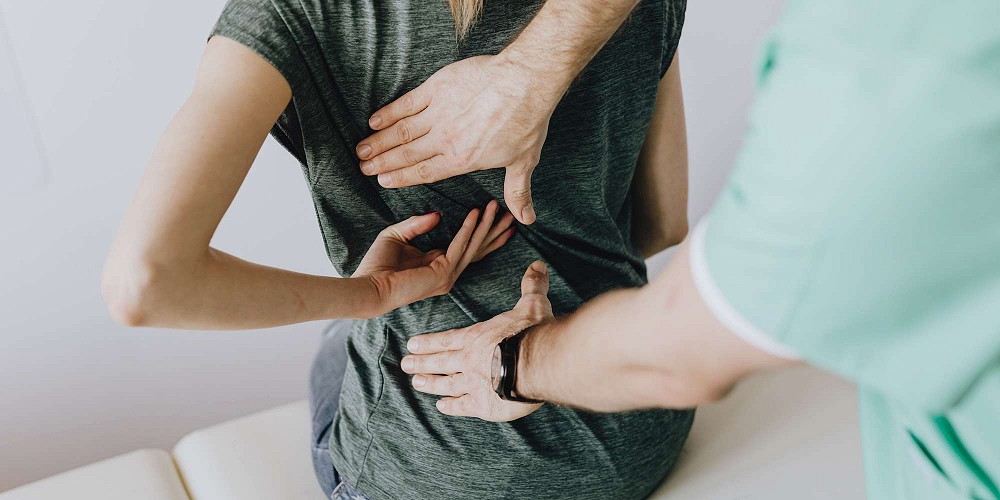Breaking the Silence: Talking About Pelvic Organ Prolapse
Article by Amy Finlay
POP is a condition that’s often not spoken about that can be very disconcerting or even embarrassing for women who are suffering.

What is Pelvic Organ Prolapse?
Pelvic Organ Prolapse, or POP, is a type of hernia that occurs when the female pelvic organs (the Uterus, Bladder, or Rectum) press onto or into the soft tissue of the Vagina.
This condition can range in symptoms from very uncomfortable to completely symptom free. It is a condition that is often not spoken about in the general public, and can be very disconcerting or even embarrassing for those women who are suffering.
POP can lead to symptoms such as:
- Urinary Incontinence
- Fecal Incontinence
- Pain or constant pressure of the Pelvic Floor
- Painful Intercourse
- A bulging or heavy sensation of the Pelvic Floor
If you have been diagnosed with POP you are not alone:
- The prevalence of symptomatic POP affects approximately 5% of women.
- On vaginal exam POP was determined to be present in upwards of 50% of women.
- It has been stated that up to half of all women over 50 have some form of POP.
What Causes Pelvic Organ Prolapse?
The Pelvic Organs are supported by a network of muscles, ligaments, and fascia; this network is typically referred to as a “Hammock”. When the network is altered, either in terms of ligament/fascial laxity or muscular weakness, the organs can drop down leaving them in a less than ideal position.
The most common causes of POP are history of vaginal births (one or multiple) and menopause. Hormone changes in menopause tend to change the integrity of the pelvic floor tissue, making them more prone to laxity, while vaginal births create a mechanical stretching/weakening of the tissue from the baby passing through the birth canal.
There is said to often be a genetic component to POP, meaning a family history can leave one at higher risk of developing the condition.
A history of smoking and carrying excessive weight over time have also been named as risk factors.
How is Pelvic Organ ProlapseTreated?
Physiotherapy
Pelvic Floor Physiotherapists are certified in the assessment and treatment of the Pelvic Floor. Physiotherapy treatment can often help to reduce pain and provide advice on management of POP.
Physiotherapy treatment can include:
- Prescription of appropriate exercise
- Education on activities of daily living such as bathroom use, intimacy, and remaining active successfully
- Manual therapy treatment of the surrounding areas to help reduce pressure on the Pelvic Floor
- Modalities such as acupuncture and ultrasound to help reduce pain
Pessaries
Silicone devices, similar to a diaphragm used for contraception, are inserts for the vagina that help to lift and support the Pelvic Floor. These often help women to be more comfortable, reducing their symptoms and allowing them to be active.
Pessaries require regular follow up with a doctor to fit the device and check their integrity.
Consultation with a Specialist
Obstetrics, gynecology, urology, and urogynecology are areas of specialty where more severe case of POP are often referred on to.
These specialists can further assess the severity of POP and determine if surgery is appropriate.
References
- Barber MD, Maher C, Epidemiology and outcome assessment of pelvic organ prolapse, Int Urogynecol J. 2013 Nov;24(11):1783-90. doi: 10.1007/s00192-013-2169-9.
- Walker, G.J.A., Gunasekera P., Pelvic organ prolapse and incontinence in developing countries: review of
- prevalence and risk factors, Int Urogynecol Journal (2011) 22: Number 2, Page 127
- Slieker-ten Hove, M.C.P., Pool-Goudzwaard, A.L., Eijkemans, M.J.C. et al. Int Urogynecol Journal (2009)
- 20:1037. https://doi.org/10.1007/s00192-009-0902-1
- https://www.health.harvard.edu/womens-health/pelvic-organ-prolapse-youre-not-alone
- https://www.health.harvard.edu/womens-health/what-to-do-about-pelvic-organ-prolapse
- https://www.ncbi.nlm.nih.gov/pmc/articles/PMC3970401/
You May Also Like...
-
 ArticleView Post
ArticleView PostInjectable Therapy (Part 1 of 2): Prolotherapy, PRP, and Cortisone
Nearly 8 million Canadian residents are living with the diagnosis of chronic pain1. Living with pain can impact one’s abilities to participate in activities of daily living—such as work, school, and socialization. There are many possible branches of treatment for chronic pain, and this article highlights the positive role that injectable therapies can have.
-
 ArticleView Post
ArticleView PostTreating Chronic Pain
Chronic pain is often misunderstood, both in the health care community and among the general public. So what is it, and what causes chronic pain?
-
 ArticleView Post
ArticleView PostA Pain in the Butt, or a Pain in the Back?
Could your leg pain actually be coming from your back? Let’s take a look at pain originating from the sciatic nerve, the largest nerve in your body.